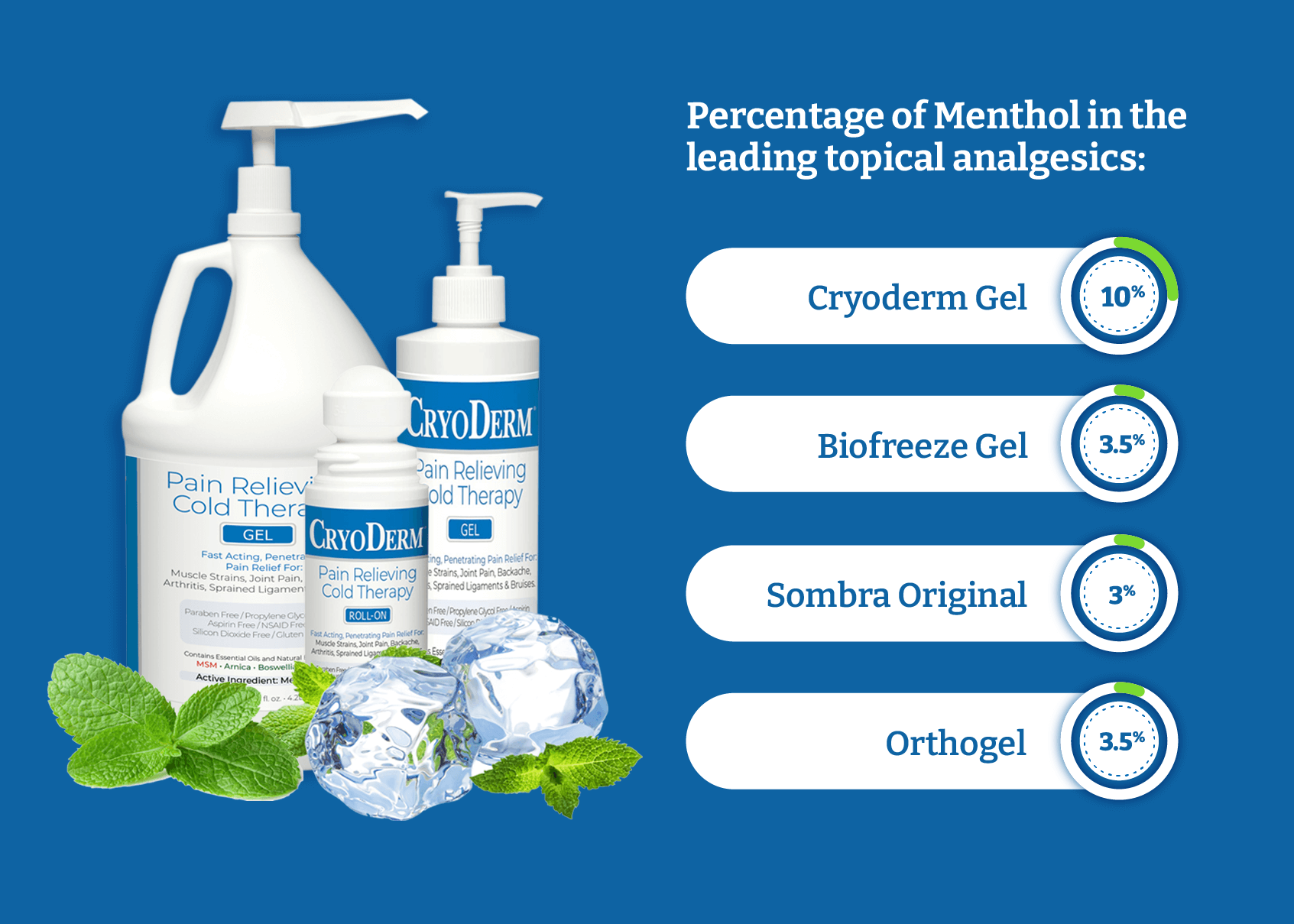RESEARCH AND DEVELOPMENT
Menthol produces dose-dependent analgesia for greater pain relief.
Does 3.5% versus 10% make a difference?
Studies showed that natural (-)-Menthol (l-menthol, natural menthol derived from peppermint oil) diminishes one’s perception of pain in a dose-dependent manner. In one study researchers found that the subject’s pain threshold was increased when higher concentrations of l-menthol were applied centrally or peripherally.
Scientists from the Departments of pharmacology of the University of Florence (Florence, Italy), and from the Department of Pharmacology of Natural Substances and General Physiology (Rome, Italy) investigated the analgesic properties of (l)- and (d)-menthol and observed the presence of stereoselectivity: (l)-menthol (natural menthol derived from peppermint oil) was able to increase the pain threshold whereas (d)-menthol (synthetic menthol) was completely devoid of any analgesic effect. Scientists from Centre for Neuroscience Research and Membrane Biology Group, Centre for Integrative Physiology, Edinburgh, United Kingdom, came to similar conclusions in their experiments with (l) - and (d)-menthol: Concentration-dependent effects on pain threshold were observed in both studies.
Menthol produces dose-dependent analgesia. Studies show that higher concentrations of menthol produce greater pain relief!
The results indicated that (-)-menthol is endowed with analgesic properties mediated through a selective activation of ?-opioid receptors and Group II/III metabotropic glutamate receptors (mGluRs). The antinociception induced by (-)-menthol (l-menthol) was comparable to that exhibited by morphine.
Conclusion:
Topical analgesic products with 10% menthol are more potent and produce greater pain relief than other products with lower menthol concentration.
References:
- Nicoletta Galeotti, Lorenzo Di Cesare Mannelli, Gabriela Mazzanti, Alessandro Bartolini and Carla Ghelardini. Menthol: a natural analgesic compound. Neuroscience Letters Volume 322, Issue 3, 12 April 2002, Pages 145-148.
- Proudfoot CJ, Garry EM, Cottrell DF, et al. Analgesia mediated by the TRPM8 cold receptor in chronic neuropathic pain. Curr Biol 2006; 16: 1591e1605.
- Cryoderm-how it works. www.cryoderm/research.com
